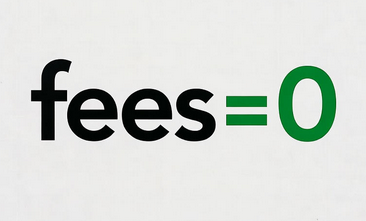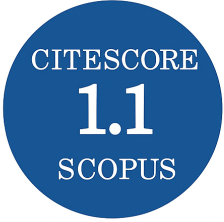Identification of Concrete Material Model Parameters Using Optimisation Algorithms
DOI:
https://doi.org/10.3849/aimt.01213Keywords:
LS-Dyna, material model of concrete, numerical simulation, optiSLang, parameter identificationAbstract
The application of nonlinear material models of concrete within numerical simulations focused on the design of safer and more economical protective concrete structures is currently the subject of investigation of many scientific researchers. However, one basic problem related to the nonlinear modelling of concrete is that very often there is a lack of knowledge about the material model parameters whose values must be defined. The solution to this problem can be what is termed inverse parameter identification, an approach which is presented in this paper. Specifically, the material parameters of the Continuous Surface Cap Model for concrete are identified within this paper using optimisation algorithms. The subsequent comparison of parameter identification results with experimental data shows the precision of the presented approach.
References
ADINA R&D Inc., ADINA: Theory and Modeling Guide [Reports ARD 97–7; 97–8]. ADINA R&D Inc., 1997.
ANSYS, ANSYS Mechanical Theory Reference Release 15.0. 2014.
LS-DYNA, Theory Manual, Livemore Software Technology Corporation, Livemore, 2017.
WU, M., CHEN, Z. and ZHANG, C. Determining the Impact Behavior of Concrete Beams Through Experimental Testing and Meso-Scale Simulation: I. Drop-Weight Tests. Engineering Fracture Mechanics, 2015, vol. 135, p. 94-112. ISSN 0013-7944. https://doi.org/10.1016/j.engfracmech.2014.12.019.
KALA, J. and HUSEK, M. Improved Element Erosion Function for Concrete-Like Materials with the SPH Method. Shock and Vibration, 2016, vol. 2016, p.1-13. https://doi.org/10.1155/2016/4593749.
YOUSUF, M., UY, B., TAO, Z., REMENNIKOV, A. and LIEW, J. Y. R. Impact Behaviour of Pre-Compressed Hollow and Concrete Filled Mild and Stainless Steel Columns. Journal of Constructional Steel Research, 2014, vol. 96, p. 54-68. ISSN 0143-974X. https://doi.org/10.1016/j.jcsr.2013.12.009.
KALA, J., HRADIL, P. and BAJER, M. Reinforced Concrete Wall Under Shear Load – Experimental and Nonlinear Simulation. International Journal of Mechanics, 2015, vol. 9, p. 206-212.
ZHAN, T., WANG, Z. and NING, J. Failure Behaviors of Reinforced Concrete Beams Subjected to High Impact Loading. Engineering Failure Analysis, 2015, vol. 56, p. 233-243. https://doi.org/10.1016/j.engfailanal.2015.02.006.
KRAL, P., KALA, J. and HRADIL, P. Verification of the Elasto-Plastic Behavior of Nonlinear Concrete Material Models. International Journal of Mechanics, 2016, vol. 10, p. 175-181. ISSN 1998-4448.
KRALIK, J. and BARAN, M. Numerical Analysis of the Exterior Explosion Effects on the Buildings with Barriers. Applied Mechanics and Materials, 2013, vol. 390, p. 230-234. https://doi.org/10.4028/www.scientific.net/AMM.390.230.
KALA, J. and HUSEK, M. High Speed Loading of Concrete Constructions with Transformation of Eroded Mass into the SPH. International Journal of Mechanics, 2016, vol. 10, p. 145-150. ISSN 1998-4448.
HOKES, F., KALA, J. and KRNAVEK, O. Nonlinear Numerical Simulation of a Fracture Test with Use of Optimization for Identification of Material Parameters. International Journal of Mechanics, 2016, vol. 10, p. 159-166. ISSN 1998-4448.
KRAL, P., HRADIL, P., KALA, J., HOKES, F. and HUSEK, M. Identification of the Parameters of a Concrete Damage Material Model. Procedia Engineering, 2017, vol. 172, p. 578-585. https://doi.org/10.1016/j.proeng.2017.02.068.
HOKES, F. and KALA, J. Selecting the Objective Function During the Inverse Identification of the Parameters of a Material Model of Concrete. Frattura ed Integrità Strutturale (Fracture and Structural Integrity), 2017, vol. 11, p. 7-16.
OPTISLANG, Methods for Multi-Disciplinary Optimization and Robustness Analysis, Weimar: Dynardo, 2014.
LS-DYNA, Keyword User’s Manual. Livemore Software Technology Corporation, Livemore, 2017.
MURRAY, Y. D., ABU-ODEH, A. and BLIGH, R. Evaluation of Concrete Material Model 159 [Report No. FHWA-HRT-05-063], 2006.
MURRAY, Y. D. User’s Manual for LS-DYNA Concrete Material Model 159 [Report No. FHWA-HRT-05-063]. Federal Highway Administration, 2007.
SANDLER, I. S., DIMAGGIO, F. L. and BALADI, G. Y. Generalized Cap Mode for Geological Materials. ASCE Journal of the Geotechnical Division, 1976, vol. 102, p. 683-699.
SCHWER, L. E. and MURRAY, Y. D. A Three Invariant Smooth Cap Model with Mixed Hardening. International Journal for Numerical and Analytical Methods in Geomechanics, 1994, vol. 18, p. 657-688.
GEOPALAERATNAM, V. S. and SHAH, S. P. Softening Response of Plain Concrete in Direct Tension. ACI Journal, 1985, vol. 85, no. 3, p. 310-323.
KALA, Z. and VALES, J. Global Sensitivity Analysis of Lateral-Torsional Buckling Resistance Based on Finite Element Simulations. Engineering Structures, 2017, vol. 134, p. 37-47. https://doi.org/10.1016/j.acme.2018.01.009.
KALA, Z. Global Sensitivity Analysis in Stability Problems of Steel Frame Structures. Journal of Civil Engineering and Management, 2016, vol. 22, no. 3, p. 417-424. https://doi.org/10.3846/13923730.2015.1073618.
HUNTINGTON, D. E. and LYRINTZIS, C. S. Improvement to Limitations of Latin Hypercube Sampling. Probabilistic Engineering Mechanics, 1998, vol. 13, p. 245-253.
Downloads
Published
License
Copyright (c) 2018 Advances in Military Technology

This work is licensed under a Creative Commons Attribution-NonCommercial 4.0 International License.
Authors who publish with this journal agree to the following terms:
1. Authors retain copyright and grant the journal right of first publication with the work simultaneously licensed under a Creative Commons Attribution License that allows others to share the work with an acknowledgement of the work's authorship and initial publication in this journal.
2. Authors are able to enter into separate, additional contractual arrangements for the non-exclusive distribution of the journal's published version of the work (e.g., post it to an institutional repository or publish it in a book), with an acknowledgement of its initial publication in this journal.
3. Authors are permitted and encouraged to post their work online (e.g., in institutional repositories or on their website) prior to and during the submission process, as it can lead to productive exchanges, as well as earlier and greater citation of published work.
Users can use, reuse and build upon the material published in the journal for any purpose, even commercially.






